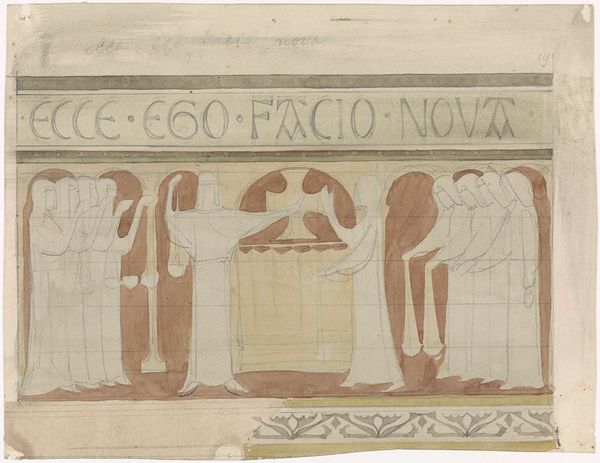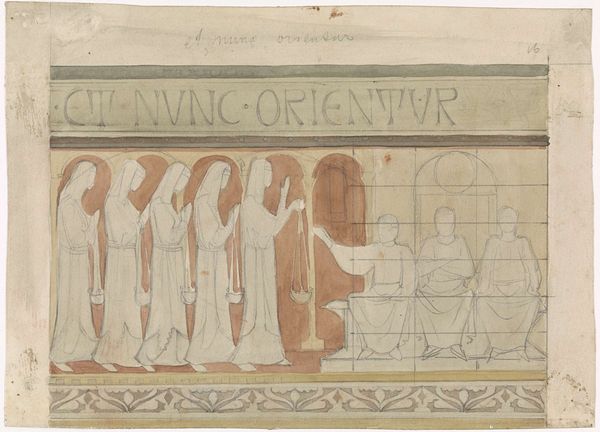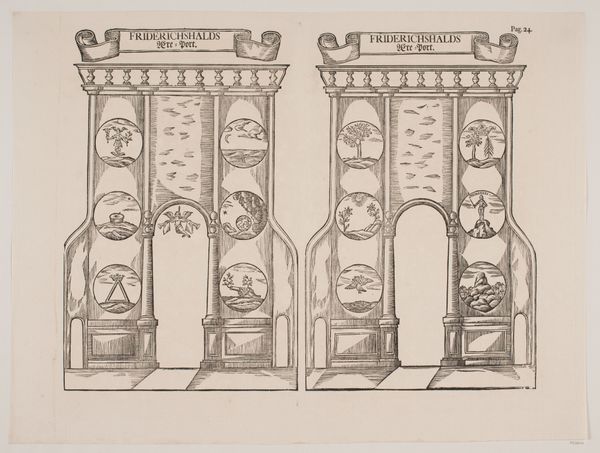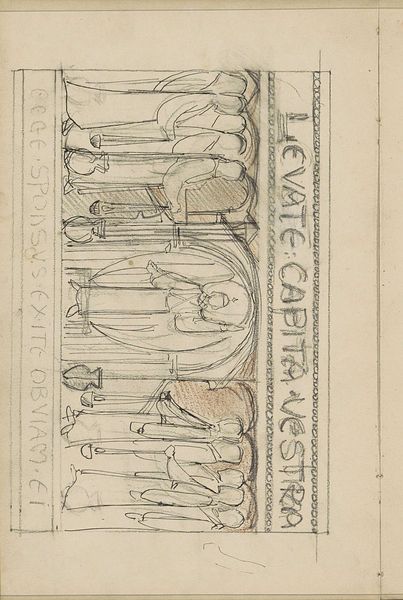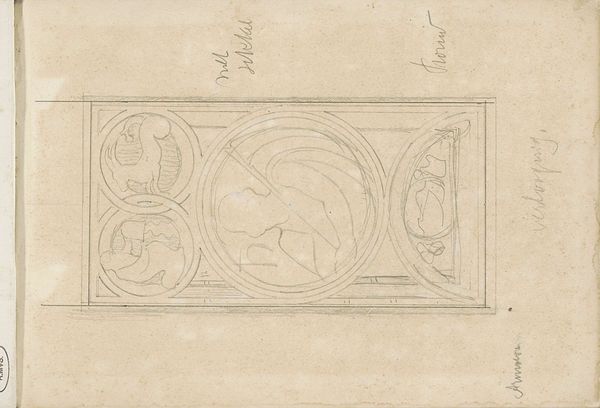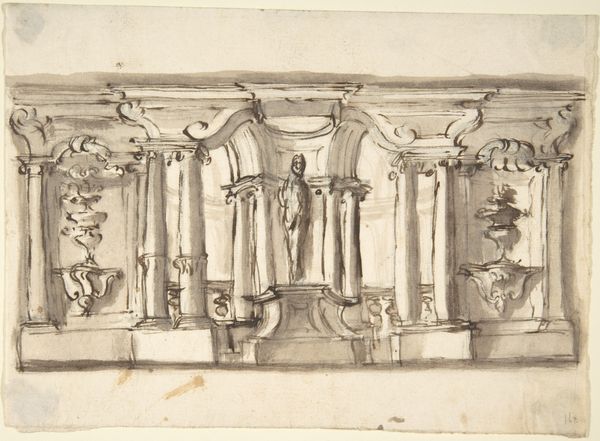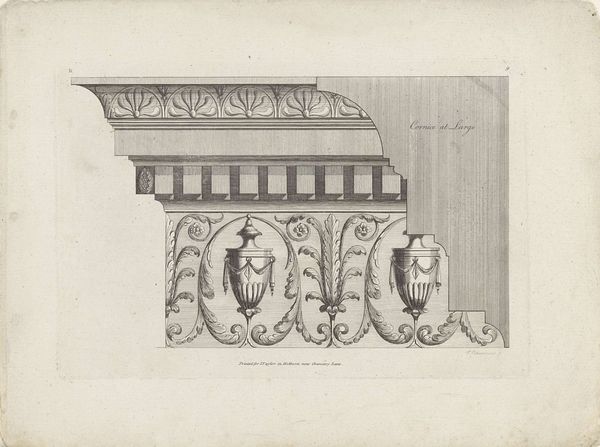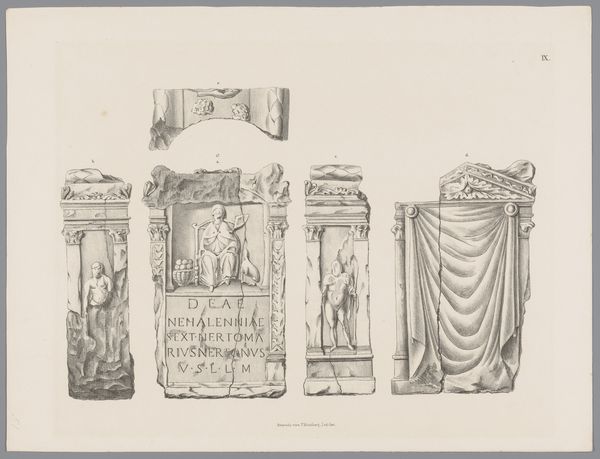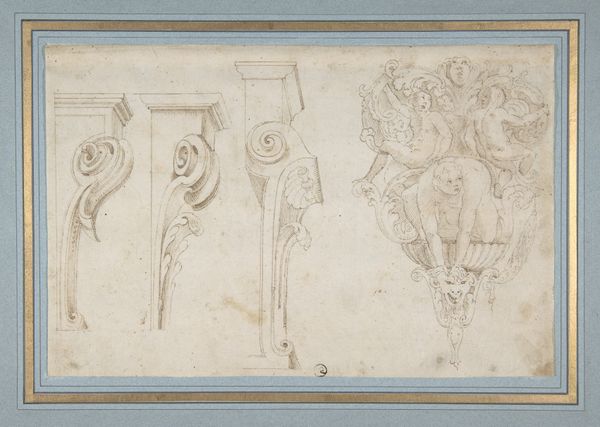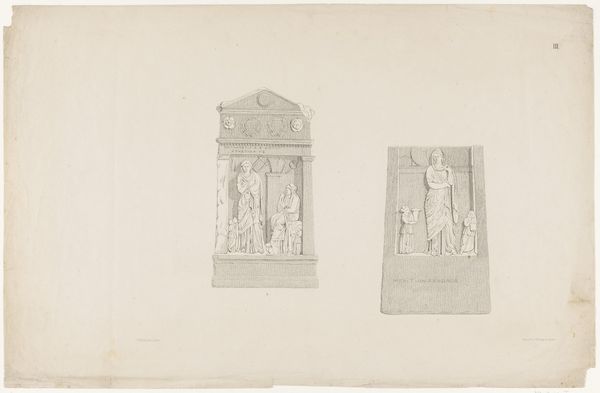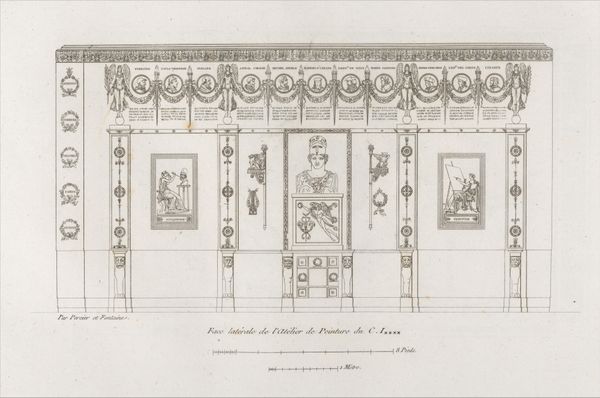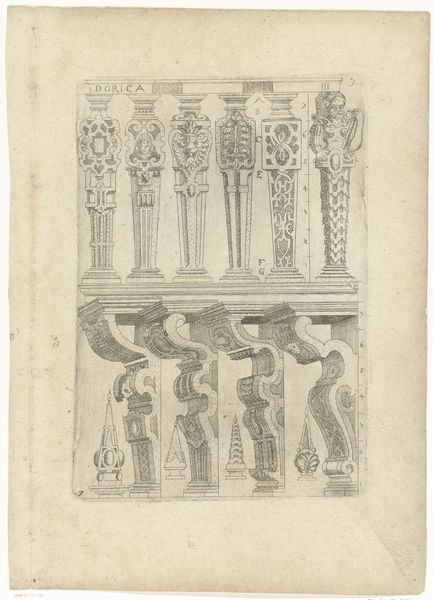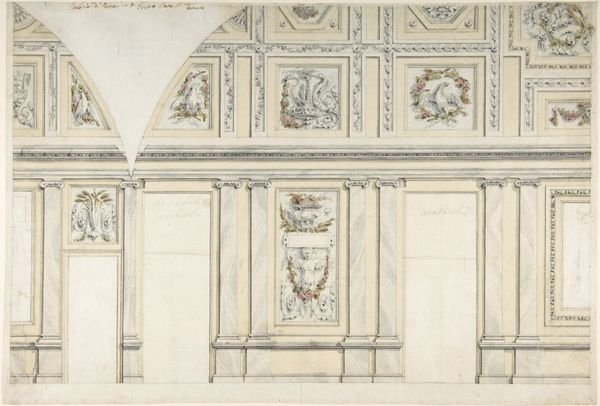
drawing, paper, watercolor, ink
#
drawing
#
byzantine-art
#
figuration
#
paper
#
watercolor
#
ink
#
history-painting
Dimensions: height 170 mm, width 240 mm
Copyright: Rijks Museum: Open Domain
Curator: Let's turn our attention to "The Five Wise Virgins," a drawing by Antoon Derkinderen. Executed with ink, watercolor, and pencil on paper, it dates from somewhere around 1869 to 1925. What are your immediate impressions? Editor: It feels hushed, like a reverent echo of a medieval fresco. There's something undeniably solemn and graceful about those figures holding their lamps, though unfinished, still powerfully evocative. Curator: Indeed. The linear quality, especially visible in the drapery and the figures themselves, calls to mind Byzantine art. And the Latin inscription above – "Te Deum Laudamus Te" – further emphasizes the sacred nature of the scene, aligning perfectly with the tradition of history painting that he had been exposed to from his time studying decorative art. Editor: Exactly! The deliberate composition leads the eye rhythmically across the figures. They’re all facing right, except for the robed figure on the right-most edge, drawing immediate focus, almost calling back. The lamps and arms angled upwards emphasize their forward progression. I’m very drawn to its graphic power – its capacity to simplify without sacrificing emotional depth. Curator: Observe also the careful arrangement of these forms within a frieze-like structure. Derkinderen has considered every plane—from the ornamental border at the bottom to the somber gray band above the figures—in an almost architectural manner. A striking example of form following content, with art historical roots digging back through Pre-Renaissance church murals. Editor: Yes, that linear structure acts like a stabilizing frame that grounds them even as they walk, wander, dream. Those colors too... the delicate use of washed color lends a sense of unreality, and heightens a feeling of timelessness, too. The lack of detail keeps it…alive! As if each viewing brings an individual perspective. Curator: The lack of completion might arguably even enhance its overall message. One is compelled to contemplate not only what is visible but also what lies beyond, inviting a uniquely open encounter for the viewer. Editor: True—it makes me ponder those things unfinished in myself... the half-lit aspects of all humans yearning for wholeness and enlightenment. Curator: I see your point. Let's move along now...
Comments
No comments
Be the first to comment and join the conversation on the ultimate creative platform.
